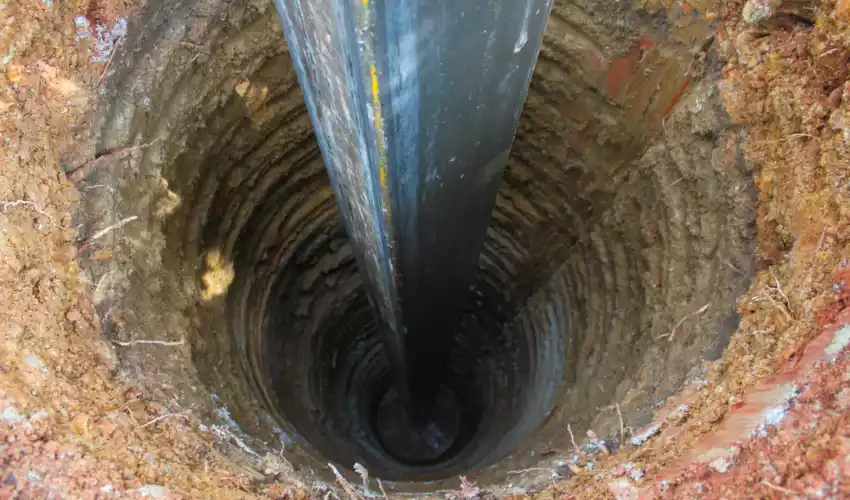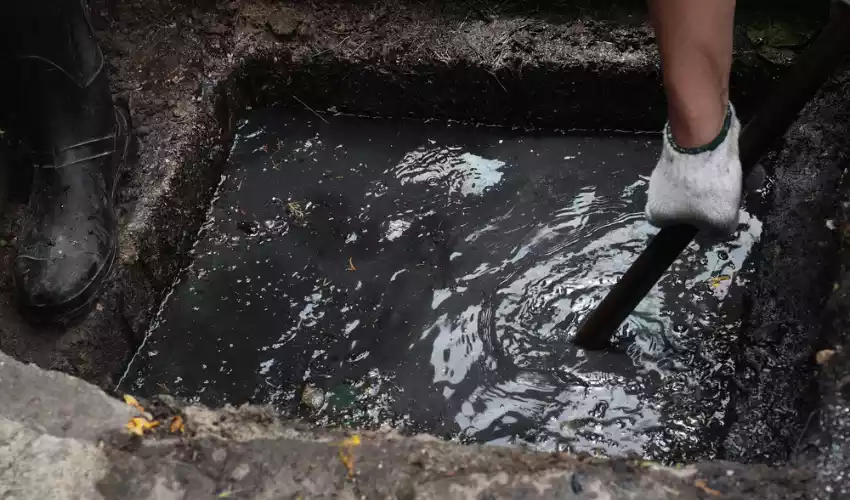The strategic placement of water wells and septic tanks plays a pivotal role in promoting both health and safety. When these two systems are positioned too close, there is a high chance of water contamination. This concern brings us to the primary topic of discussion – what is the optimal distance between a water well and a septic tank?
In accordance with the recommendation of various health organizations and construction guidelines, the minimum distance should be at least 50 feet. However, this distance may vary based on specific factors such as local regulations, soil type, and the designs of the septic tank and the well.
Establishing a safe distance between the two is crucial to ensure the quality and safety of your drinking water. Overlooking this aspect may lead to severe health implications, alongside the legal repercussions of non-compliance with the established regulations.
Water Wells
Definition and Purpose
Water wells have been an essential resource for humans for millennia. They are excavations or structures created in the ground by digging, drilling, or driving to access groundwater in underground aquifers. Their main purpose is to provide a reliable source of water for various applications. The most common use is for drinking and household needs, but water wells also serve agricultural, industrial, and environmental monitoring purposes.
How Wells Work
Water wells operate on a simple principle. A hole is drilled deep into the ground to reach an aquifer—a layer of water-bearing permeable rock. Once this aquifer is tapped, the water can be brought to the surface using a pump. The water is then treated, if necessary, and is ready for use.

Legal and Health Regulations
Each country, and often individual states or regions within those countries, has specific regulations regarding the digging, use, and maintenance of water wells. These laws are essential to ensure the sustainable use of groundwater and to prevent the contamination of the water supply.
For example, in the United States, every state has guidelines on well construction and placement, well technician licensing, and well decommissioning. Adherence to these guidelines ensures that wells are constructed and maintained properly, reducing the risk of groundwater contamination.
Septic Tanks
Definition and Function
Septic tanks are an integral component of a septic system, which is a type of simple, onsite sewage facility. They are common in rural areas where houses are not connected to municipal sewer lines.
Septic tanks are typically made of concrete, fiberglass, or plastic. They are buried underground and are designed to collect and treat wastewater from a home or business. The tank separates solid waste from the liquid, treating it through biological decomposition and drainage, and then releases the treated wastewater back into the environment through a drain field.
How Septic Tanks Work
The operation of a septic tank is a relatively straightforward process. Wastewater flows into the tank at one end and leaves the tank at the other. The waste then separates into three layers: solids that fall to the bottom (sludge), oils and fats that float to the top (scum), and relatively clear water in the middle.
The sludge and scum are broken down by naturally occurring bacteria within the tank. The remaining water, or effluent, contains bacteria and nutrients but is clear enough to be released into the environment.
Legal and Health Guidelines
Regulations for septic tanks are set by local health departments and environmental agencies. These regulations cover the design, installation, and maintenance of septic systems, all aimed at protecting public health and the environment.
Failure to comply with these regulations can result in penalties, including fines and mandated repairs or replacements. More importantly, improper septic tank placement or maintenance can lead to the contamination of groundwater, posing a significant risk to public health.

Distances and Why They Matter
Potential Risks of Close Proximity
The primary risk of having a water well and septic tank too close to each other is the potential for drinking water contamination. If a septic tank leaks, or if wastewater is not adequately treated, harmful bacteria, viruses, and other contaminants can seep into the soil and eventually reach the well.
This risk is especially high in areas with high groundwater levels or porous soil types, where contaminants can more easily travel through the ground. Drinking water contaminated by septic waste can lead to serious illnesses, including gastroenteritis, hepatitis, and dysentery.
Impact on Water Quality
Contamination of a well can significantly impact the quality of the water it produces. In addition to potential health risks, the presence of septic waste can affect the taste, smell, and appearance of your water. Regular testing of well water is crucial to ensure its safety and quality.
Deciding the Distance
Factors to Consider
The required distance between a water well and a septic tank can depend on several factors. Soil type plays a major role, as some soil types can filter out contaminants better than others.
The slope of the land is another important factor. If a septic tank is uphill from a well, gravity can cause contaminants to flow more easily towards the well. Similarly, the water table level and the depth of the well can impact how likely it is for contaminants to reach the well.
Guidelines from Health Organizations
Most health organizations and regulatory bodies suggest a minimum distance of 50 feet between a well and a septic tank. However, as mentioned before, this distance can vary depending on the factors listed above.
The Environmental Protection Agency (EPA) in the United States suggests distances ranging from 50 to 100 feet, depending on the type and size of the septic system. It’s always a good idea to consult with a local health department or environmental agency to ensure you’re following the most accurate guidelines for your area.
The Ideal Distance
Typical Distance Range
While the minimum distance is often set at 50 feet, it’s generally recommended to place your well and septic system as far apart as possible. If your property allows for it, a distance of 100 feet or more can provide an added layer of safety.
Variances and Exceptions
In some cases, variances are granted for properties that can’t accommodate the recommended distances due to size or other physical limitations. In such instances, additional protective measures may be required, such as the installation of a more advanced treatment system.

Installation Planning
Site Evaluation
Proper site evaluation is key to successful well and septic tank installation. This evaluation should include soil testing, slope analysis, and a survey of the property to identify the best locations for each system. A professional should carry out this evaluation, as it can greatly impact the safety and functionality of your well and septic system.
Professional Help Importance
When planning the installation of a well or a septic system, it’s always best to hire professionals. They can guide you through the entire process, ensuring that you comply with all regulations, avoid common pitfalls, and get the most out of your systems.
They can also provide valuable advice on maintenance, helping you keep your systems in good working order for years to come. Remember, an upfront investment in professional services can save you from costly repairs or health issues down the line.
Common Mistakes
Ignoring Local Regulations
One of the most common mistakes people make when installing wells or septic systems is not fully understanding or following local regulations. These rules are in place for a reason, and failing to comply can lead to serious consequences.
Before starting any work, it’s essential to research the specific regulations in your area and make sure you understand them. This includes regulations regarding permits, site selection, construction methods, and more.
Insufficient Site Planning
Another common mistake is inadequate site planning. For example, failing to take into account the slope of your property, the type of soil, or the location of existing structures can all lead to problems down the line.
Professional site evaluation can help you avoid these issues by identifying the best locations for your well and septic system, as well as any potential challenges that might arise.
Legal Consequences
Non-compliance Issues
Ignoring or not being aware of local regulations not only leads to functional and safety issues but can also result in legal trouble. Non-compliance with these regulations can lead to a range of penalties, from fines to forced reconstruction of the systems.
Potential Penalties
Specific penalties vary by region and the severity of the violation. They may include fines, injunctions to stop use or to carry out repairs, or even criminal charges in severe cases. Moreover, non-compliance can lower your property value and make it more difficult to sell in the future.
Ensuring Safe Distance
Regular Inspections
Regular inspections are a crucial part of maintaining a safe distance between your well and septic tank. Inspections can identify issues such as leaks or other damage that could lead to contamination.
In many areas, annual inspections of septic systems are required by law. Regular well inspections, while not always mandated, are just as crucial in preventing contamination and ensuring your water supply remains safe to use.
Maintenance Tips
Regular maintenance is key to prolonging the life of your well and septic system and preventing contamination. For septic systems, this includes regular pumping to remove the buildup of sludge and scum. Most systems require pumping every 3 to 5 years, but the exact frequency depends on the size of your tank and the number of people in your household.
For water wells, regular maintenance includes periodic water testing to check for contaminants, as well as inspections of the well structure to identify any potential issues. If you notice changes in taste, color, or smell, it’s essential to get your water tested immediately.
Frequently Asked Questions
What if my water well and septic tank are already closer than recommended?
If your systems are closer than recommended, it’s crucial to get your water tested for contaminants frequently. If possible, consider relocating one or both of the systems to ensure safety.
Who should I contact for installation or relocation of water wells and septic tanks?
Always consult with a licensed professional or a local health department for any installations or relocations. They will guide you based on local regulations and best practices.
What other precautions can I take to avoid contamination?
Regular inspection and maintenance, using water testing kits, and adhering to local regulations are effective ways to avoid contamination.
Conclusion
Adequate spacing between water wells and septic tanks is vital for health and safety. Neglecting this aspect could lead to water contamination and subsequent health risks.
The generally accepted distance is at least 50 feet. However, it’s always safer to go beyond this minimum limit. Local regulations, soil type, and the specific designs of your well and tank are some factors that may influence this distance.
In essence, strategic planning and professional guidance are paramount to ensuring a safe and healthy environment. Compliance with local regulations and health guidelines, regular inspections, and preventive maintenance are some proactive measures that can contribute to the safe usage of these systems.